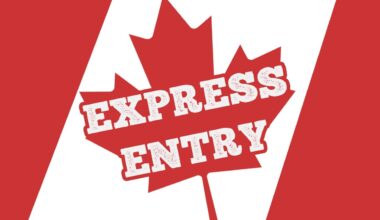Published: May 13, 2025
Breaking News: CEC Draw Returns After Three-Month Hiatus
Immigration, Refugees and Citizenship Canada (IRCC) has just conducted its first Canadian Experience Class (CEC) draw in over three months, issuing 500 Invitations to Apply (ITAs) to eligible Express Entry candidates. This development comes as welcome news for temporary residents currently working in Canada who are seeking a pathway to permanent residency through their Canadian experience.
The May 13 draw required candidates to have a minimum Comprehensive Ranking System (CRS) score of 547 points and an Express Entry profile created before May 21, 2024. This marks the fourth CEC-specific draw of 2025, following selections in January and February.
Official Source: IRCC Express Entry Draw Results
 Understanding the Current CEC Selection Pattern
Understanding the Current CEC Selection Pattern
The resumption of CEC draws follows an observable pattern in IRCC’s Express Entry management strategy. Our analysis of the 2025 draw history reveals several critical insights for potential applicants:
1. Declining Draw Sizes and Rising CRS Thresholds
A concerning trend for CEC candidates is the progressive reduction in draw sizes and increase in CRS score requirements:
| Date | Number of ITAs | CRS Cut-off |
|---|---|---|
| January 8, 2025 | 1,350 | 542 |
| January 23, 2025 | 4,000 | 527 |
| February 5, 2025 | 4,000 | 521 |
| May 13, 2025 | 500 | 547 |
This pattern suggests a strategic pivot by IRCC toward more selective and smaller CEC draws, with a 26-point increase in the CRS threshold since February and a dramatic reduction in invitations issued.
2. Priority Shift to Category-Based Selections
IRCC has clearly prioritized Provincial Nominee Program candidates and category-based selections in 2025:
| Draw Type | Number of Draws | Total ITAs |
|---|---|---|
| Provincial Nominee Program (PNP) | 8 | 4,586 |
| Canadian Experience Class (CEC) | 4 | 9,850 |
| French-language proficiency | 3 | 18,500 |
| Education | 1 | 1,000 |
| Healthcare and social services | 1 | 500 |
With 34,440 total ITAs issued so far in 2025, the focus on PNP and category-based selections reflects IRCC’s targeted approach to addressing specific labor market needs rather than broadly selecting CEC candidates.
Actionable Insights for CEC Candidates
Based on our extensive experience working with successful CEC applicants, we’ve developed several strategic recommendations for candidates in the current Express Entry landscape:
1. Maximize Canadian Work Experience Points
The insight: With rising CRS thresholds, every point matters, and Canadian work experience offers significant value.
Actionable steps:
- Prioritize continuous full-time employment to reach the three-year maximum (70 points)
- Ensure meticulous documentation of all work hours and responsibilities
- Consider job transitions strategically to maintain NOC skill level or improve it
- Explore potential bridging work permits if current status is expiring
- Request detailed reference letters that clearly align with NOC job descriptions
Official Source: CRS Points Calculator
2. Strategic Profile Timing and Management
The insight: The one-year date restrictions on CEC profiles mean timing matters significantly.
Actionable steps:
- Create your Express Entry profile immediately upon reaching 12 months of Canadian experience
- Update your profile promptly when reaching new Canadian experience thresholds (1, 2, and 3 years)
- Maintain active job searches and document them, even while in the Express Entry pool
- Consider postponing profile submission until reaching higher experience thresholds if CRS score is borderline
- Review and update your profile regularly, especially after language test retakes or education upgrades
Real experience example: Maria had accumulated 11 months of Canadian experience and was eager to enter the Express Entry pool. Our team advised her to wait the additional month to qualify for CEC, and during this time, she improved her language scores. This strategy resulted in an additional 50 CRS points (experience qualification plus improved language) and an immediate ITA in the following draw.
3. Diversification Through Provincial Pathways
The insight: With CEC draws becoming less frequent and more competitive, PNP streams offer compelling alternatives.
Actionable steps:
- Research and pursue provincial streams that value Canadian experience
- Focus on provinces with occupation-specific streams matching your profile
- Consider PNP streams with lower CRS requirements that target specific NOC codes
- Be prepared to demonstrate genuine intention to reside in the nominating province
- Develop connections to your target province through professional networking or community involvement
Official Source: Provincial Nominee Programs
4. Leverage Category-Based Selection Criteria
The insight: IRCC’s category-based selections can offer alternative pathways with lower CRS thresholds.
Actionable steps:
- Assess whether your occupation falls under any of the priority categories (healthcare, STEM, trades, transport, agriculture)
- Update your Express Entry profile to clearly highlight relevant experience in these sectors
- Consider additional credentials or certifications that strengthen category alignment
- Determine if your position can be reclassified under a priority NOC code
- Explore French language improvement if feasible (French-language draws have consistently lower thresholds)
Real experience example: Sophia, a nurse with a CRS score of 518, was concerned about meeting the CEC threshold. By updating her profile to emphasize her healthcare credentials, she qualified for the May 2 healthcare draw with a cut-off of just 510 points.
Official Source: Category-Based Selection
5. CRS Score Maximization Techniques
The insight: With the increased CRS threshold (547), candidates need to extract every possible point from the CRS calculation.
Actionable steps:
- Retake language tests to aim for higher CLB levels, particularly focusing on weakest skills
- Pursue additional Canadian educational credentials, even short-term certificates
- Obtain Educational Credential Assessments for all international credentials, including partial studies
- Consider relationships with Canadian citizens or permanent residents if applicable
- Explore provincial nomination as a guaranteed 600-point boost
The Political Context: New Immigration Leadership and Policy Directions
Today’s CEC draw coincides with a significant transition in Canada’s immigration leadership. Prime Minister Mark Carney has appointed Lena Metlege Diab as Canada’s new Minister of Immigration, replacing Rachel Bendayan.
This leadership change signals potential policy shifts that CEC candidates should monitor closely:
Prime Minister Carney’s Immigration Priorities
Based on previous policy statements and our analysis of governmental directions, several key priorities are expected to shape immigration policies:
- Stabilization of permanent resident levels at 1% of Canada’s population by 2027
- Increased francophone immigration targets and potential advantages for French-speaking candidates
- Global Talent Stream revitalization to focus on attracting specialized skills
- Reduction in temporary resident numbers, potentially making the transition to permanent residency more competitive
These priorities suggest that while pathways to permanent residency will remain open, competition may intensify, particularly for those without specialized skills or French language abilities.
Strategic Planning Under New Leadership
Minister Diab’s appointment provides an opportunity for fresh approaches to immigration management. Our experience with previous ministerial transitions suggests several potential developments:
- Initial policy continuity while new leadership assesses existing programs
- Mandate letter publication within 4-6 weeks outlining specific immigration priorities
- Potential program adjustments in the second half of 2025
- Increased emphasis on economic contribution metrics for immigration candidates
CEC candidates should remain attentive to policy announcements and be prepared to adapt their immigration strategies accordingly.
2025 Express Entry Forecast: What CEC Candidates Should Expect
Based on our analysis of current trends and policy directions, we anticipate these developments for CEC candidates in the remainder of 2025:
1. Continued Selective CEC Draws
We expect IRCC to maintain a pattern of smaller, more selective CEC draws with high CRS thresholds, likely in the 540-560 range, with draws occurring approximately every 6-8 weeks rather than monthly.
2. Increased Integration with Category-Based Selection
Future CEC draws may incorporate occupation-specific elements, prioritizing candidates with experience in high-demand sectors or with specialized skills that align with economic priorities.
3. Provincial Program Expansion
As the federal government emphasizes targeted immigration, provinces are likely to expand their PNP streams that value Canadian experience, creating alternative pathways for CEC-eligible candidates who cannot meet the high federal CRS thresholds.
4. French Advantage Enhancement
The emphasis on francophone immigration suggests that CEC candidates with French language abilities will enjoy significant advantages, with potentially dedicated draws or additional points for French proficiency.
5. Processing Time Improvements
With more selective draws issuing fewer ITAs, we anticipate improved processing times for CEC applications, potentially reducing the current 6-8 month timeline to 4-6 months by late 2025.
Official Source: Express Entry Processing Times
 Comprehensive CEC Application Strategy for 2025
Comprehensive CEC Application Strategy for 2025
For candidates pursuing the CEC pathway , we recommend this comprehensive approach:
Phase 1: Assessment and Score Maximization
- Complete CRS assessment to identify point-gaining opportunities
- Prioritize language testing with targeted preparation for weaker skills
- Document all Canadian work experience with detailed reference letters
- Evaluate educational credentials and pursue advantageous Canadian credentials
- Research provincial pathways aligned with your occupation and location
Phase 2: Profile Optimization and Submission
- Create meticulous Express Entry profile highlighting all eligible factors
- Submit provincial expressions of interest for applicable PNP streams
- Explore category-based qualification opportunities
- Maintain continuous employment to accumulate additional Canadian experience
- Consider strategic job transitions to higher-NOC categories if possible
Phase 3: Pool Management and ITA Preparation
- Monitor draw patterns closely to anticipate opportunities
- Update profile promptly with any improvements to language or education
- Prepare documentation in advance for rapid response to ITAs
- Explore bridging options if work permit expiration is approaching
- Consider parallel immigration pathways if CEC timelines are concerning
Conclusion: Navigating CEC Success in a Competitive Landscape
The resumption of CEC draws after a three-month hiatus signals both opportunity and challenge for candidates with Canadian experience. While the pathway remains viable, the increased CRS threshold of 547 indicates a more competitive landscape requiring strategic preparation and profile optimization.
The combination of smaller draw sizes, higher CRS requirements, and emerging policy directions under new leadership makes professional guidance more valuable than ever for candidates seeking to leverage their Canadian experience into permanent residency.
Whether you’re just beginning your CEC journey or seeking to optimize an existing Express Entry profile, our personalized approach ensures you receive strategies tailored to your unique circumstances and the evolving immigration landscape.
Disclaimer: Immigration policies and draw details are subject to change. While this article reflects the most current information available at the time of publication, we recommend consulting with a regulated immigration professional for advice tailored to your specific situation.






